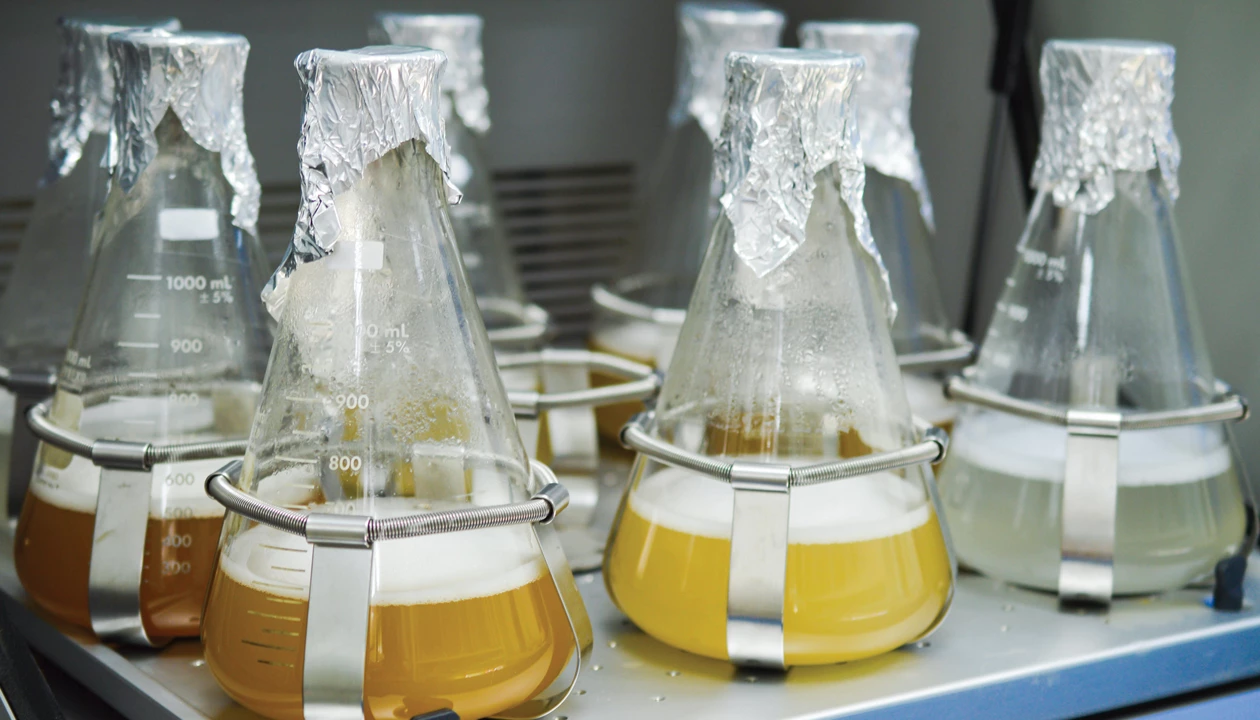Almost all organisms follow a basic rule to make proteins. Information in DNA is encoded by codons made of three bases, or letters, and most life uses 64 codons to code for 20 naturally occurring amino acids as well as start and stop signals. But scientists have long sought to free up existing codons and repurpose them to build new molecules that could be used in everything from medicines to materials. Now researchers led by Jason Chin at the MRC Laboratory of Molecular Biology (LMB) have developed a viable Escherichia coli strain that uses only 57 codons—and it took only around 100,000 changes to the genome to do it (Science 2025, DOI: 10.1126/science.ady4368).
“It’s a radically recoded genome,” says Wes Robertson, who was a postdoc with Chin when the work began and is now a group leader at the LMB. With the current technology, this is likely the most compressed genetic code possible, he says.
Because multiple codons encode the same amino acids, swapping one three-letter code for another doesn’t change the protein, but it does affect RNA stability. This loss of stability can reduce RNA expression and protein synthesis, which can kill cells. So, because some areas of the genome are more sensitive to codon substitutions than others, instead of changing many codons at once, the researchers opted for a process in which bacteria survivability was checked every step of the way.
First, to weed out swaps that would negatively affect the microbes, the team tried different codon compression combinations on a stretch of the E. coli genome that contained a high proportion of essential genes. They settled on a genome design that didn’t affect these important genes but still replaced seven codons with synonyms: six for amino acids and one for a stop codon.
Then the team pieced together stretches of synthetic DNA to make 38 fragments of 100 kilobase (kb) DNA. Different E. coli cultures then each had a portion of their natural DNA replaced with one of these synthetic fragments.
While most of the fragments resulted in healthy bacteria, some made nonviable or slow-growing strains. Going through long stretches of DNA to pinpoint the problems wasn’t feasible, so the team instead mixed the engineered bacteria with a wild-type strain. The strains exchanged genetic material to produce new hybrid strains that grew normally. The team sequenced the new bacterial DNA, and if a portion of the synthetic genome wasn’t present in any of the healthy bacteria, it meant it needed to be fixed.
Over four years of painstaking work, the research team created one final strain named E. coli Syn57. “We really had to map and fix the fitness of every strain before we could go from 100 kb all the way up to 4 Mb of synthetic DNA,” Robertson says.
Although the strain grows four times slower than nonsynthetic counterparts, Robertson expects that with adjustments, they can increase the growing speed. He also says the team’s methods can be used as a blueprint for codon compression in other organisms.
“It’s an impressive paper of genome synthesis,” says Farren Isaacs, a biology professor who has developed synthetic-genome E. coli strains at Yale School of Medicine. But he cautions that it’s only one piece of the puzzle that needs to be solved before the strain is ready for codon-reassignment use.
Removing transfer RNAs (tRNAs), the helper molecules that read the three-letter codes and enable their translation into proteins, will be the next hurdle. But because of cross talk between tRNAs and codons, as well as the complex nature of protein synthesis, tRNA removal can also affect cell survival, Issacs explains. “Functional utility [of the strain] remains to be determined,” but the study is an exciting development in the field, he says.
Chemical & Engineering News
ISSN 0009-2347
Copyright ©
2025 American Chemical Society

